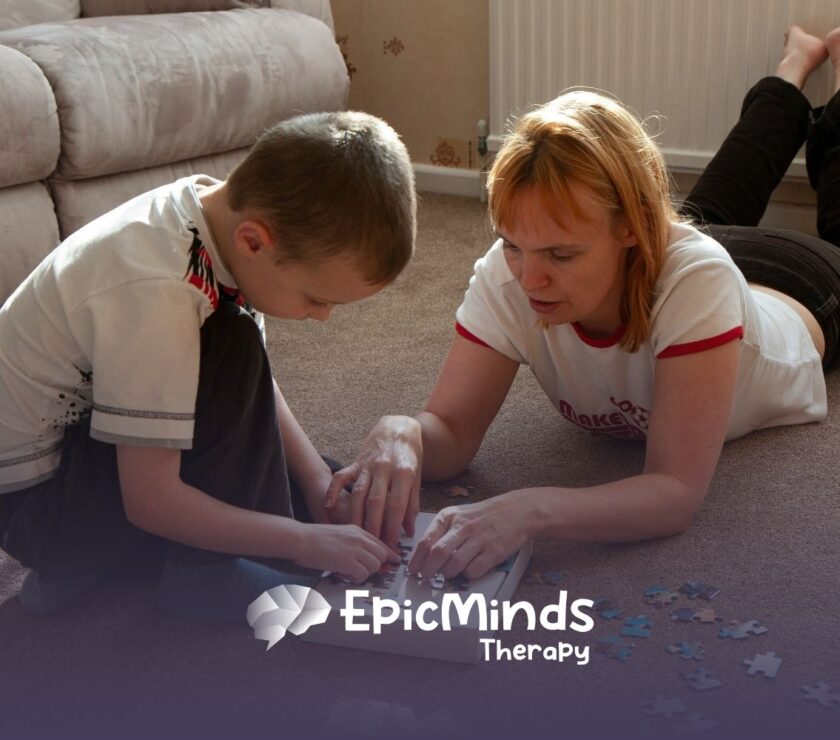Debunking ABA therapy misconceptions can clear the path for families exploring behavioral interventions for autism. Applied Behavior Analysis, often called ABA, relies on positive reinforcement and individualized goals to help children and adults develop practical skills. Despite its strong evidence base, the therapy still attracts doubts and misunderstandings.
This article will examine common myths about ABA therapy, present research-backed facts, and offer guidance for parents, educators, and professionals in Maryland and North Carolina. By separating fact from fiction, readers can make informed decisions about evidence-based treatment options.
Define ABA Therapy
Historical Development
Applied Behavior Analysis emerged in the 1960s when Dr O. Ivar Lovaas introduced Discrete Trial Training (DTT). Early approaches sometimes used aversive methods such as electric shocks to reduce self-injurious behaviors. Modern ABA has since evolved to eliminate punishment, focusing on reinforcement to shape positive behavior.
Core Techniques
ABA therapy uses structured methods to teach and reinforce desired skills. Key components include:
- Positive reinforcement, where preferred items or activities follow a target behavior
- Prompting and fading prompts to encourage independence
- Functional communication training to build expressive language
- Natural Environment Training, which embeds teaching in everyday routines
Explore Common Misconceptions
Punishment And Aversion
A persistent belief holds that ABA relies on punishments. In reality, contemporary practice emphasizes rewarding progress rather than discouraging unwanted actions. Modern programs avoid aversive stimuli and train therapists to create engaging, play-based sessions.
Conformity Versus Diversity
Some self-advocates argue that ABA pushes autistic individuals to mimic neurotypical behavior. Critics say it risks erasing unique traits. Defenders counter that ABA aims to enhance independence—fostering choice, communication, and participation—without negating neurodiversity.
Table-Based Drills Only
The image of a child seated at a table with flashcards is only one aspect of ABA, known as DTT. Therapists now incorporate Natural Environment Training, following the individual’s interests during play or daily routines. This approach makes learning feel seamless rather than forced.
Behavior Reduction Focus
It’s true ABA tracks target behaviors, but that tracking serves a larger goal of skill building. Programs emphasize teaching self-care, social interaction, and communication alongside reducing challenging behaviors. The emphasis remains on positive development rather than solely eliminating steps.
Assess Evidence And Effectiveness
Outcome Studies Summary
More than 20 peer-reviewed studies document improvements following intensive, long-term ABA therapy. Reported gains include:
- Social skills for 80 percent of participants
- Communication abilities for 75 percent
- Behavior management for 70 percent
- Overall quality of life for 85 percent
Long Term Impact
Research on service duration shows that two thirds of children referred to ABA remain in services for at least 12 months, while nearly half continue for 24 months. Even partial treatment doses yield significant adaptive behavior gains. The US Surgeon General and the American Psychological Association recognize ABA as an evidence-based best practice.
| Time Period | Stayed In Services | Goals Met Discontinuation | Other Discontinuation Reasons |
| 12 Months | 66 percent | 14 percent | Family choice, finances |
| 24 Months | 46 percent | 21 percent | Relocation, insurance changes |
Explain Customized Treatment Plans
Role Of BCBA And RBT
ABA programs are designed by a Board Certified Behavior Analyst (BCBA) and implemented by therapists or Registered Behavior Technicians (RBTs) under supervision. This team tailors strategies to each individual’s strengths, preferences, and family circumstances.
Natural Environment Training
Natural Environment Training (NET) teaches skills within everyday contexts. Therapists follow the child’s lead, turning snack time, playground visits, and daily chores into learning opportunities. NET avoids prolonged table work and promotes generalization of skills across settings.
Address Ethical Concerns
Evolving Ethical Standards
Ethical guidelines in ABA have progressed to prioritize respect, consent, and dignity. Punishments and negative reinforcement are no longer acceptable. Today’s practitioners use positive reinforcement, behavior charts, and coping strategies that support emotional regulation without coercion.
Family And Advocate Roles
Family members and self-advocates play an active role in planning and monitoring ABA programs. Open communication ensures goals reflect personal priorities. Sessions can be scheduled around family routines, strengthening collaboration and reinforcing progress outside therapy hours.
Select ABA Providers
Credentials And Certification
Families should verify credentials such as BCBA, BCaBA (Board Certified Assistant Behavior Analyst), or RBT. Only certified professionals can deliver formal ABA therapy and ensure adherence to ethical and clinical standards.
Insurance Coverage Options
ABA services often qualify for private insurance coverage, though specifics vary by plan and state. All Medicaid plans must cover medically necessary treatments for children under 21 if prescribed by a doctor. Families in Maryland and North Carolina should consult local providers to confirm coverage details and explore financial assistance options.
Key Takeaways
ABA therapy has evolved far beyond its early aversive methods to become a supportive, individualized intervention backed by decades of research. It focuses on teaching practical skills—communication, independence, social interaction—through positive reinforcement. Natural Environment Training and family collaboration further personalize learning, ensuring therapy fits real life. By understanding credentials, coverage options, and ethical standards, families and professionals can choose ABA programs that honor neurodiversity and promote lasting progress.
At Epic Minds ABA, we’re proud to offer compassionate, evidence-based ABA therapy across Maryland and North Carolina. Our team of experienced BCBAs and RBTs works closely with families to design personalized treatment plans that help children thrive in real-world environments. Contact us today for a free consultation and discover how we can support your child’s journey toward independence, confidence, and meaningful growth.
Frequently Asked Questions
What age is best to start ABA therapy for a child with autism?
Early intervention is ideal, with many children beginning ABA therapy between ages 2 and 5. However, ABA can be effective at any age, depending on individual needs and goals.
Does insurance cover ABA therapy in Maryland and North Carolina?
Yes, many insurance plans in both states cover ABA therapy for autism, especially under mandates like the Affordable Care Act. Epic Minds ABA can help you check your coverage and navigate the approval process.
What qualifications should an ABA provider or therapist have?
ABA therapy should be overseen by a Board Certified Behavior Analyst (BCBA) and implemented by trained Registered Behavior Technicians (RBTs). These credentials ensure ethical, research-based care.
Can ABA therapy be done at home or only in a clinic?
ABA therapy can be provided in-home, in schools, in clinics, or in community settings—wherever the child learns best. Epic Minds ABA offers flexible options to suit your family’s routine.
SOURCES:
https://childmind.org/article/controversy-around-applied-behavior-analysis
https://pmc.ncbi.nlm.nih.gov/articles/PMC8702444
https://my.clevelandclinic.org/health/treatments/25197-applied-behavior-analysis
https://www.autismspeaks.org/applied-behavior-analysis
https://gsep.pepperdine.edu/blog/posts/debunking-7-common-myths-about-aba-therapy.htm




